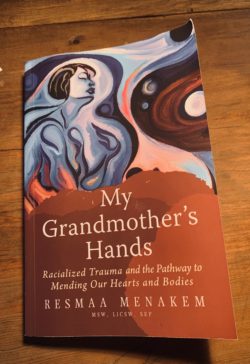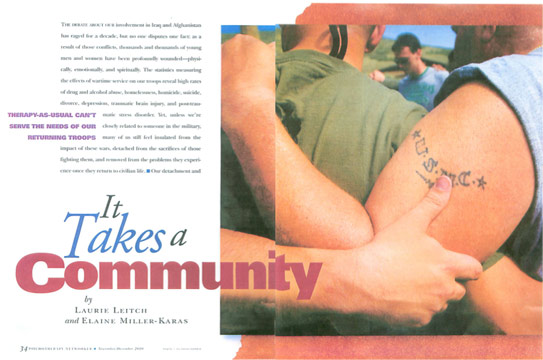“History is not the past, it is the present.
We carry our history with us. We are our history.” James Baldwin
The United States has a tormented and sad history where indigenous people and people of color are concerned. We have a lot of long-overdue work in order to advance both an in-depth understanding of and accountability for racial injustice and to design and implement strategies to ameliorate the inequities. These inequities are so embedded in all of our institutions, including our schools, that it will take great effort to truly create a process of collective healing. These inequities are also embedded in our bodies. I have recently discovered what I think can be an essential resource in moving a collective process forward: Resma Menakem’s book My Grandmother’s Hands: Racialized Trauma and the Pathway to Mending Our Hearts and Bodies. There is so much to say about this disturbing, exciting, and wisely written book but in this posting I will highlight a couple of points that have really had an impact on my thinking.

First: “White body supremacy” is the term used by Menakem to reflect the myriad ways that simply having a white body grants unearned privileges, assumed superiority, and structural power. The term “White Supremacist” evokes such a different meaning that many white people shut down when hearing it and are comfortable not including themselves in it. Menakem says of “white body supremacy that “it is always functioning in the background…it influences or determines many of the decisions we make, the options we select, the choices open to us and how we make those decisions and choices…this operating system affects all of us regardless of the hue of our skin.” When white people say, “I’m not a racist…I don’t discriminate…etc., the term “white body supremacist” reminds them/us of the many benefits they/we have simply by being in a white body.
Second: Menakem comes to this book well-versed in a somatic model. He emphasizes that trauma is stored in the body and can be passed across generations. His categories of racialized trauma provide an important framework for any of us who work with trauma and resilience. He describes 4 categories of racialized trauma: Historical Trauma, Intergenerational Trauma, Persistent Institutional Trauma, and Personal Trauma. The titles alone of these four categories highlight the profound and multi-faceted wounding inflicted on Black people and carried in the body over the generations.
There are many resources pouring forth that remind us that there can be white bodies without white body supremacy. There can be healing across the racial divide, and we can each contribute to a country that truly reflects equality for all people. May it be so.
